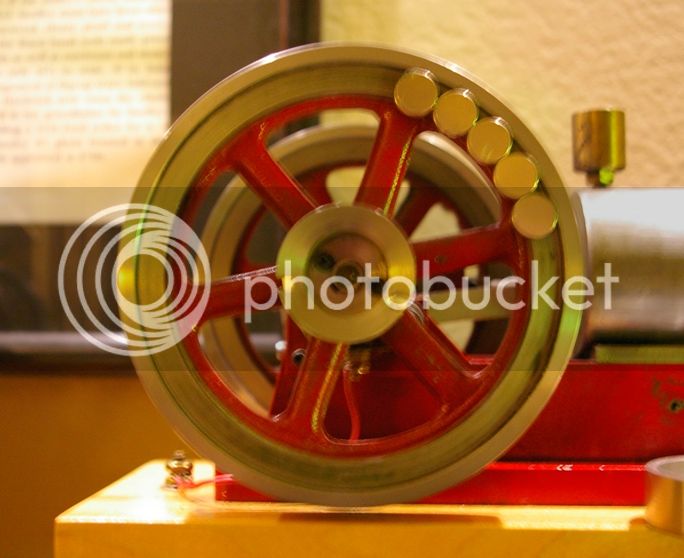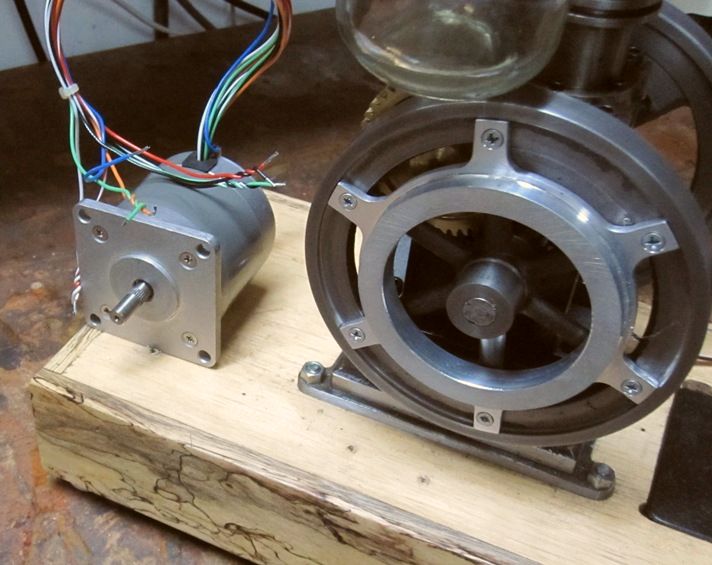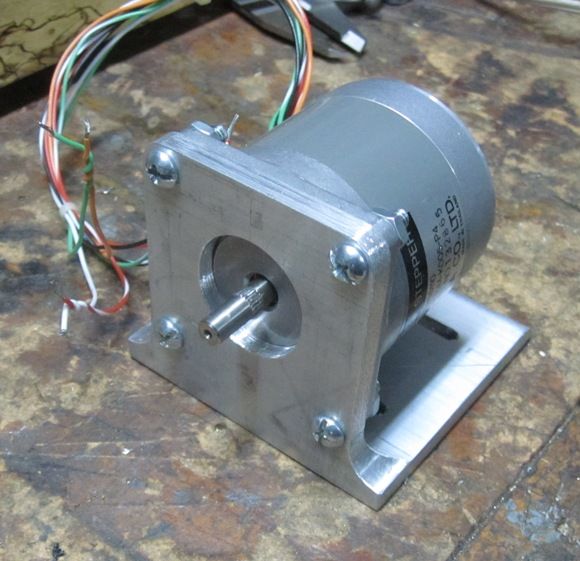- Joined
- Aug 25, 2007
- Messages
- 3,890
- Reaction score
- 715
Thanks, Guys.
Brian, turns out the gears were too loose. I don't think running them with grinding compound would have helped.
Chris, I think the angled gears I made were also too loose. If they had been slightly bigger, I think they would have been quieter.
So, 7 or 8 gears later, I got it resolved. Turns out the primary gear (23 teeth) was about .040" too small. If I had taken the time to measure the gears to begin with, I could have solved the problem with a whole lot less work! I made a new primary gear and kept the original Cam gear (46 teeth). It was just a tad too tight a fit so I applied some fine valve grinding compound to the gears and ran it with a drill for 5 or 10 minutes. Then I removed the gears, gave them a good cleaning, oiled them and put it back together. It's a whole lot quieter than it was and I think it will get even quieter as the gears wear against each other.
Here's a video I made today of it running...
[ame]http://youtu.be/cf8Vv8tWRCA[/ame]
I made a small brake which I can adjust with a screw to apply friction to the flywheel. Later, I'll add a generator or some other respectable load to it.
Chuck
Brian, turns out the gears were too loose. I don't think running them with grinding compound would have helped.
Chris, I think the angled gears I made were also too loose. If they had been slightly bigger, I think they would have been quieter.
So, 7 or 8 gears later, I got it resolved. Turns out the primary gear (23 teeth) was about .040" too small. If I had taken the time to measure the gears to begin with, I could have solved the problem with a whole lot less work! I made a new primary gear and kept the original Cam gear (46 teeth). It was just a tad too tight a fit so I applied some fine valve grinding compound to the gears and ran it with a drill for 5 or 10 minutes. Then I removed the gears, gave them a good cleaning, oiled them and put it back together. It's a whole lot quieter than it was and I think it will get even quieter as the gears wear against each other.
Here's a video I made today of it running...
[ame]http://youtu.be/cf8Vv8tWRCA[/ame]
I made a small brake which I can adjust with a screw to apply friction to the flywheel. Later, I'll add a generator or some other respectable load to it.
Chuck


















![DreamPlan Home Design and Landscaping Software Free for Windows [PC Download]](https://m.media-amazon.com/images/I/51kvZH2dVLL._SL500_.jpg)














































